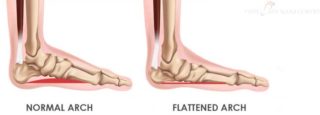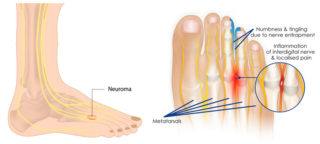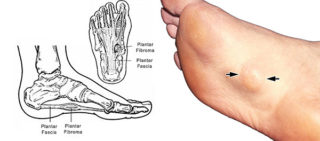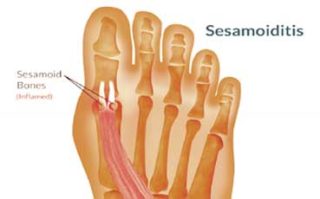

Arch and ball problem comes in picture due to overuse, improper footwear, injury, or weight gain.
Plantar fasciitis. This is the most common cause of arch pain. Plantar fasciitis can affect the heel, arch, or both. Treatment is the same regardless of the location.
Metatarsalgia. You feel this pain and inflammation in the ball of your foot. Ill-fitting shoes are the usual cause. But you might get it from strenuous activity, such as running or jumping. It’s sometimes called a stone bruise as well.
Causes of arch and ball problem :
Flat feet are a postural deformity. In this the arches of the foot collapse, with the entire sole of the foot coming into complete or near-complete contact with the ground. The appearance of flat feet is normal and cannot be judged due to baby fat which masks the developing arch and partly because the arch has not yet fully developed.

In the children foot pain, ankle pain or lower leg pain may be due to flat feet and should be evaluated.
Tibialis Posterior Tendinitis is caused by inflammation of the tendon of the tibialis posterior, which in turn is painful progressive flatfoot. Tendon then becomes inflamed, stretched or suffers a partial or total tear. This condition may lead to severe disability and chronic pain if left untreated. If People have flatfeet or an abnormal attachment of the tendon to the bones in the mid foot then they are predisposed to such condition of sever disability.
Treatment :
Literally metatarsal pain or colloquially are known as a stone bruise. This is general term used to refer any pain full foot condition affecting the metatarsal region of the foot. This problem can affect joints and bones of the metatarsals. It’s ball of the foot just behind the big toe.

Foot pain in the “ball of your foot,” the area between your arch and the toes, is generally called metatarsalgia. The pain usually centers on one or more of the five bones (metatarsals) in this mid-portion of the foot. This can cause abnormal weight distribution due to over-pronation. Metatarsal joints become painful or inflamed during such condition.
Cause :
Treatment :
In short we can say it as lumps in the arch of the foot. Plantar fibroma is growth of benign tissue on the plantar or we can say bottom surface of foot.Unlike plantar warts, which grow on the skin, these grow deep inside on a thick fibrous band called the plantar fascia.

Symptoms :
Treatment :
Sesamoiditis occur on the bottom of the foot, behind the big toe. Big toe causes inflammation or rupture of the two small bones (sesamoids) under the first metatarsal bones. Sesamoiditisin the forefoot also assist with weight-bearing and help elevate the bones of the great toe.Sesamoids can also fracture like other bones. On top of it tendons surrounding the sesamoids can become irritated or inflamed. It’s common among ballet dancers, runners and baseball catchers.

Excessive forces caused by sudden bending upwards of the big toe, high heels, or a stumble can contribute to sesamoiditis.
Symptoms :
Treatment :